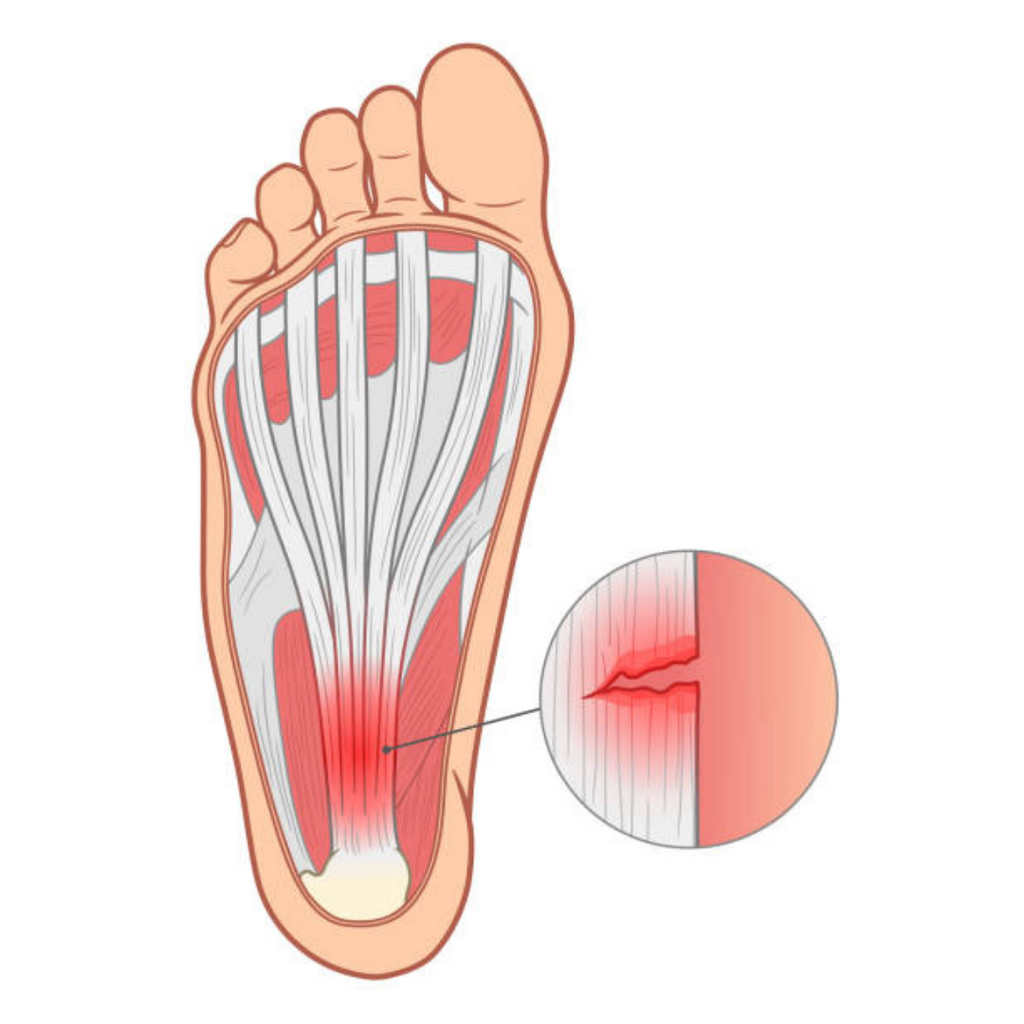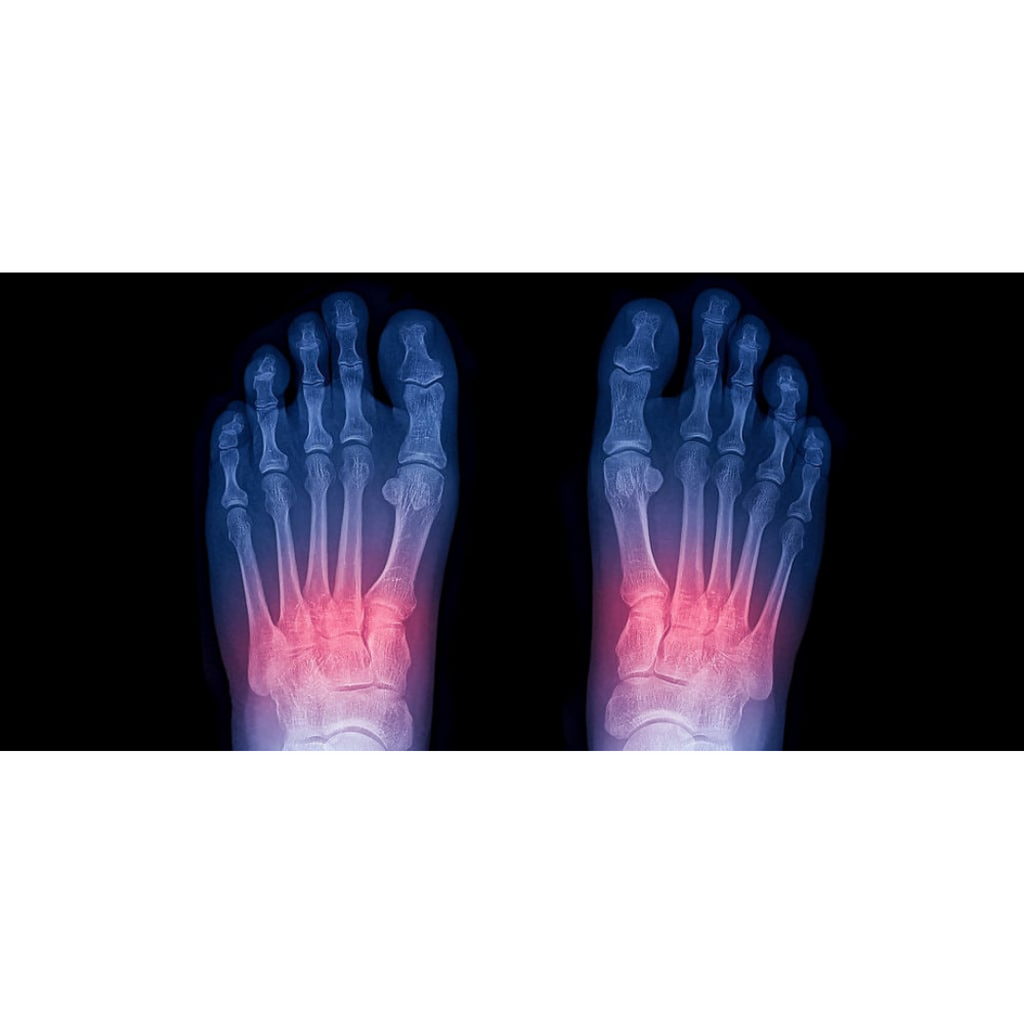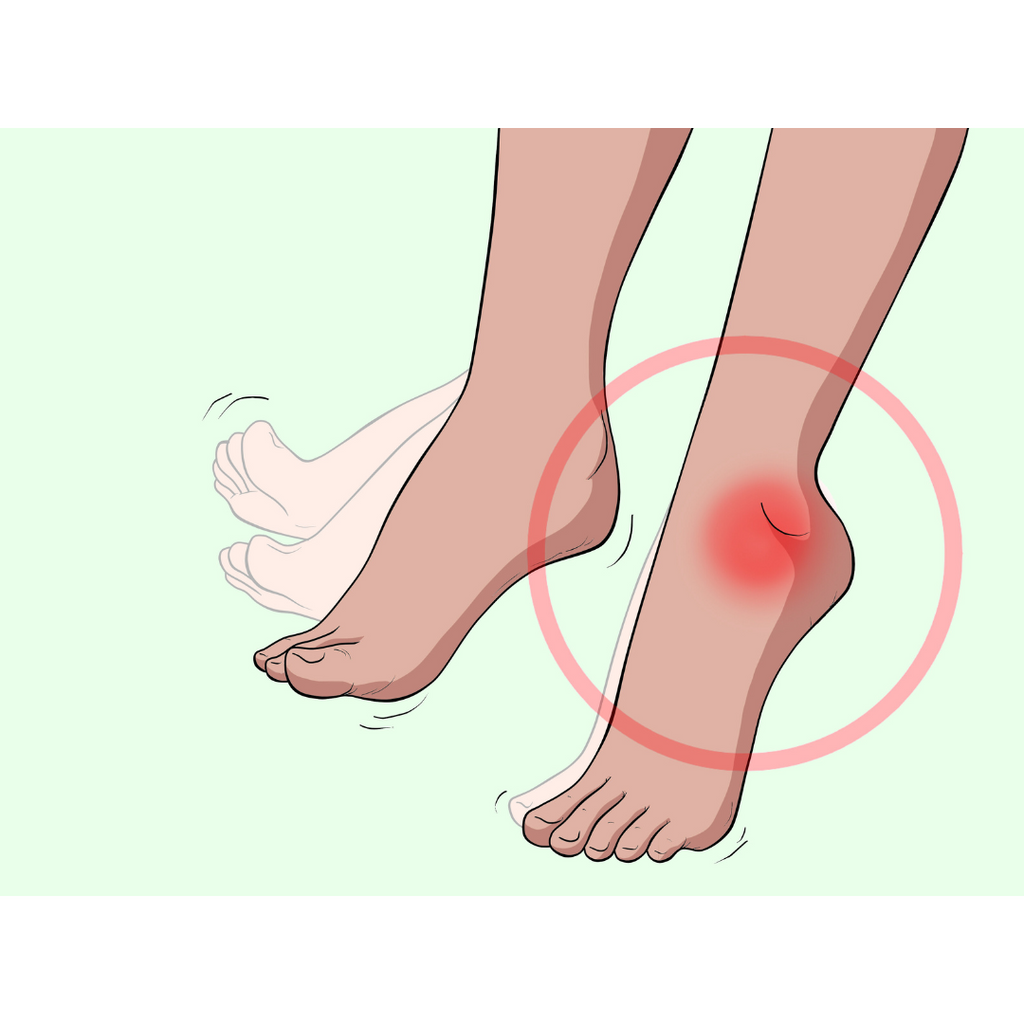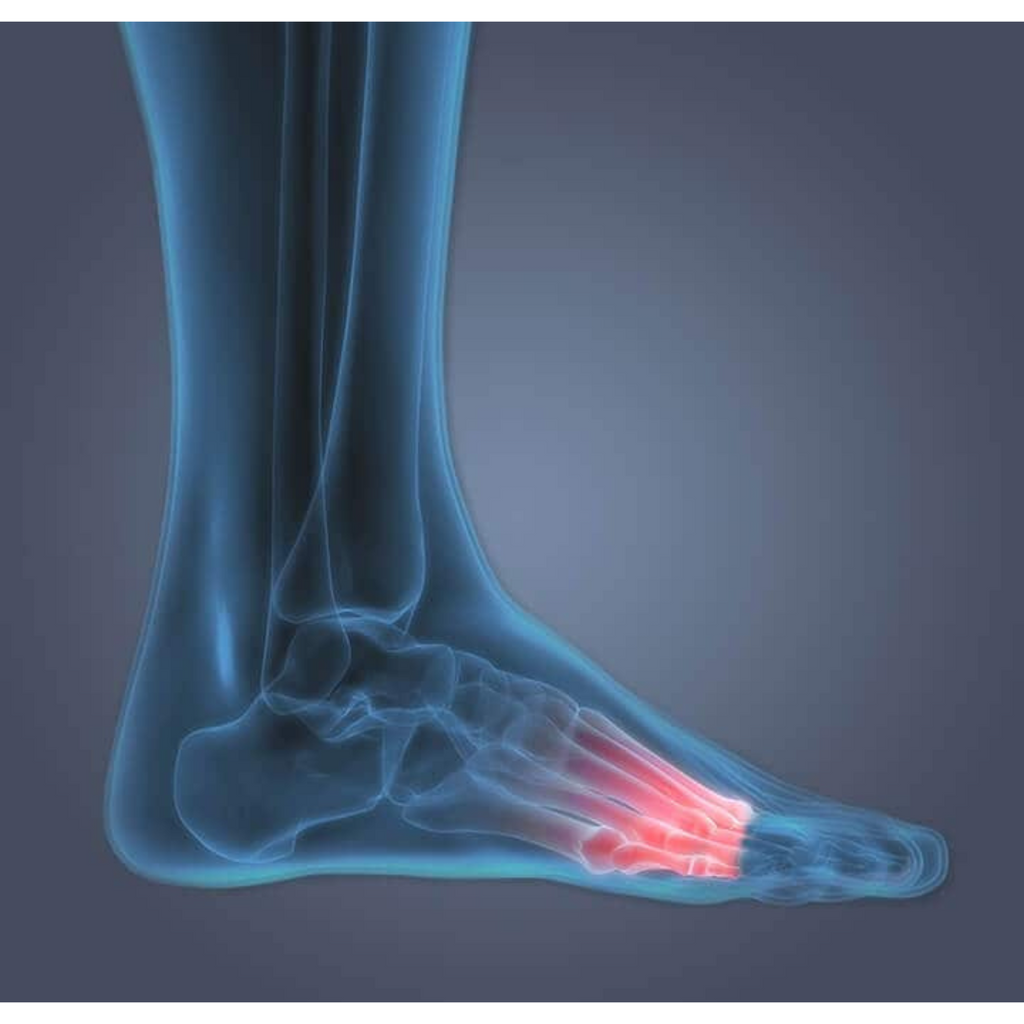Plantar fasciitis is the most common cause of heel pain. It can generate pain either after activity or inactivity periods. By taking sensible steps, you can learn how to heal plantar fasciitis quickly and get rid of chronic heel pain that can interfere with your daily activities.
The plantar fascia is a fibrous band of collagen fibers that runs along the bottom of your foot. It aims at supporting the arch of the foot while moving and to distribute pressure evenly across the foot.
Plantar fasciitis is a condition that occurs when the plantar fascia is subjected to excessive strain; this is usually due to overuse or repetitive actions that cause small tears to form in the collagen fibers. As a result, the foot's sole can become inflamed and swollen.
Read our tips on how to heal plantar fasciitis quickly below if you want to get rid of the pain in your heels and arches quickly so you can get back to living your life.
5 Best Methods to Heal Plantar Fasciitis Quickly
Plantar fasciitis, fortunately, is easily treated, and studies have shown that the earlier treatment begins, the faster the recovery process. If you follow these tips, you will be able to heal your plantar fasciitis quickly.
1. Rest, Ice and Massage
If plantar fasciitis is caused by an injury, experts recommend elevating the affected foot and applying an ice pack for at least twenty minutes, 2 to 4 times per day. Once the swelling has subsided – which can take up to two days – you should massage the heel on a daily basis with essential oils to help reduce inflammation.
Warm oil massages are beneficial because they increase blood circulation, speed up the healing process, and break up any scar tissue or adhesions that may harden later.
2. Alter Your Activity Levels
You can allow the affected plantar fasciitis tissue to heal by resting from repetitive and high-impact movements that can aggravate the condition and cause pain. Cycling and swimming are low-impact sports that should not cause foot pain.
Even if your heel pain is mild to moderate, you can improve the flexibility and strength of the plantar fascia tissue with simple stretching and strengthening exercises.
3. Wear the Appropriate Footwear
Wearing footwear with excellent arch support and shock absorption – or inserting supportive insoles – will relieve pressure on the heel. Athletic shoes with a well-cushioned sole are frequently a good choice that appears to work for the majority of people.
You can also try orthotics (shoe inserts) to help cushion your foot; even if you only have pain in one foot, it is recommended that you use them in both shoes.
4. Stretching Exercises
You can improve your condition and reduce your chances of developing plantar fasciitis in the future by stretching the sole of your foot and your calf muscles on a regular basis. Stretching exercises can help to relieve tightness in the plantar fascia, calf muscles, and Achilles tendons.
The following are some of the most popular plantar fasciitis stretches:
- Towel Stretch – You can do this simple stretch while sitting on the floor or on the bed. Simply place a rolled-up towel on the balls of your feet, grab both ends of the towel, and gently pull it back (while keeping your knees straight) until you feel your arch stretching. Hold this position for about 30 seconds before repeating.
- Toe Stretch – Sit with your heel on the floor and your toes pointing up. Pull your big toe towards you until you feel a stretch in your foot arch, then hold for 30 seconds before repeating.
5. Strengthening Exercises
According to research, strengthening exercises such as slow, weighted heel raises provide more relief within three months than stretching exercises alone. Strengthening exercises are thought to increase collagen production and the Achilles tendon's ability to withstand the weight.
The following are some of the most popular plantar fasciitis strengthening exercises:
- Heel Raises– This stretch strengthens the calf muscles, reducing the likelihood of plantarfasciitis developing. To do a heel raise, stand with both feet together and simply push off the balls of your feet to lift your heels off the ground. Hold for 5-10 seconds before lowering your heels. Find something stable to hold onto if you need assistance with your stability.
- Towel Scrunch – While seated, place a towel on the floor and place your foot flat on top of it. Pull the towel towards yourself with your toes while keeping your heels firmly on the ground. Repeat with another towel.
Additional Tips
- Weight Loss –Excess body weight can cause extra stress on the plantar fascia, so being overweight or obese can contribute to the development of the condition. Swimming is a good choice for weight loss because it does not put any strain on your feet.
- Changing your walking style to alleviate the pain of plantar fasciitis is actually more harmful to your health. This is because it can lead to additional knee, hip, and back problems.
It is estimated that up to 90% of people with plantar fasciitis will improve significantly within two months of beginning treatment, especially if regular stretches and exercises are included.
In order to learn more about healing plantar fasciitis quickly, consult a podiatrist or physiotherapist, who can provide you with additional information and a personalized treatment plan based on the severity of your condition.
Common Questions For Plantar Fasciitis Treatment
The frustrations and pain associated with plantar fasciitis frequently leave people feeling impatient, hopeless, and in need of answers. Here are some of the most frequently asked plantar fasciitis questions.
How quickly can pain be relieved?
Plantar fasciitis recovery time can range from a few days to a few years, depending on how severe your condition is and how soon you begin treatment.
Of course, leaving your condition untreated or receiving the incorrect type of treatment can lengthen recovery times.
It doesn't help that everyone has to use their feet on a daily basis, which adds pressure and stress to the feet while reducing much-needed resting times.
Someone with moderate plantar fasciitis who begins treatment early and takes the necessary precautions, such as wearing appropriate footwear, resting the feet frequently, and being in good health, can recover in a matter of weeks to months.
Is there a cure for plantar fasciitis?
While there is no immediate cure for plantar fasciitis, your feet can be healed in a short period of time through natural treatment and care or through surgery and steroid injections, both of which carry some risks.
Pain relievers can also provide some immediate pain relief while your plantar fascia heals, but they do not cure it; rather, they mask the symptoms.
What are the most effective products to treat plantar fasciitis?
There are numerous products available for the treatment of plantar fasciitis. The most popular are:
Their prices can vary greatly, and their level of effectiveness is largely determined by the severity of the user's condition and the product's quality. Having said that, at least one of these products will be required for your plantar fasciitis recovery to be successful.





